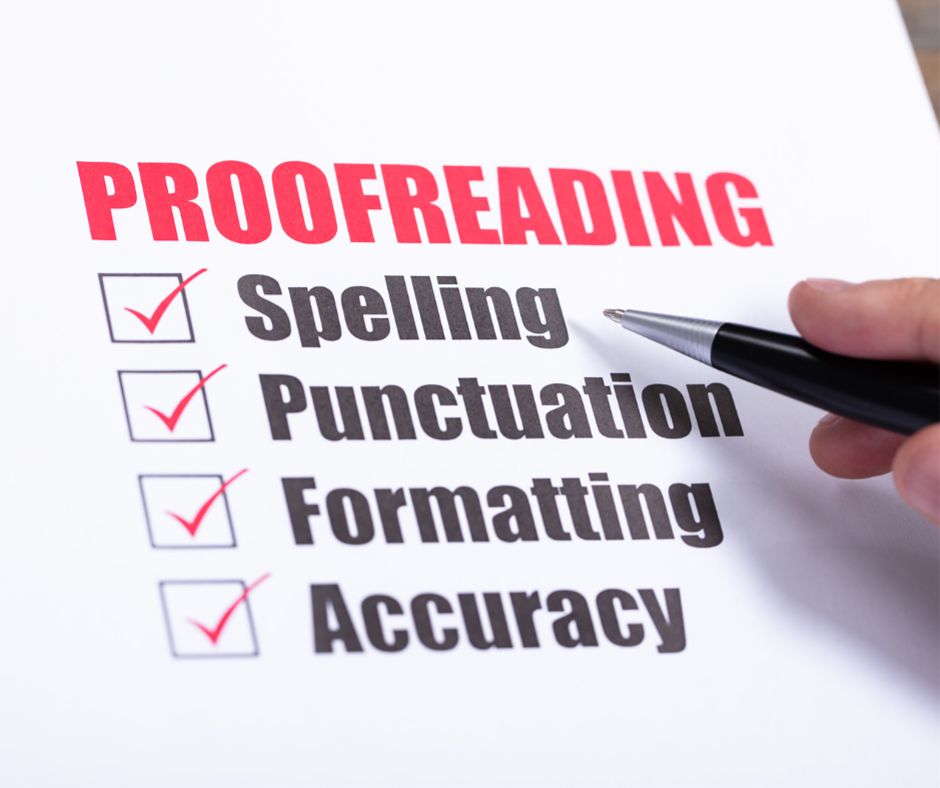Clients are able to receive a free 30-minute consultation with a company representative to get a better understanding of what they need.
Let Us Do the hard work for you

Product labelling accuracy and compliance are critical for protecting consumers and avoiding costly legal issues. However, many businesses struggle to prevent labelling errors and ensure compliance with the complex web of labelling regulations.
To assist you in navigating this difficult terrain, I’ve compiled a list of ten ways to avoid label errors and ensure labelling compliance. By adhering to these best practices, you can create accurate and effective product labels that improve your brand’s image while also protecting consumers.
These tips provide valuable insights and guidance on creating effective labels that comply with all relevant regulations, from testing label durability to using consistent labelling practices.
So, whether you’re a new company just getting started or an established brand looking to improve your labelling practices, keep reading to learn how to reduce the risk of labelling errors and ensure compliance with all applicable laws and regulations.

One of the most common mistakes that companies make is failing to follow labeling regulations. It’s essential to understand the regulations and requirements for your industry and product type and ensure that your labels comply with all relevant laws and regulations. Maintaining regulatory compliance is a key requirement for businesses. One of the most frequent errors companies make is a lack of attention to label regulations. Understanding and following regulations through Health Canada regulations is essential.
You must ensure your labels are compliant with all laws and that you understand the requirements specific to your sector, product, and materials. Skimming over or ignoring labeling regulations carries risk for violation or penalties which can be crippling. Before taking random steps without checking which might cost time and money in non-compliant material orders, combing through label regulations source from Health Canada pays off as knowledge goes a long way in minimizing risks—better to hesitate than take actions potentially resulting in costly consequences in the future before granting approval for products or services.
Before you start designing labels, develop a plan that outlines the goals and objectives of your labeling effort. This should include considerations such as the type of label (e.g., product or service), the size & shape of the label, colors & graphics used, the language used on the label (e.g., English vs French), etc. A well-thought-out plan will help ensure that all aspects of your labels are compliant with applicable regulations and laws.
Clearly labeling your products and materials is essential to efficient operations. Inconsistent labeling practices can lead to confusion, inaccuracies, and ultimately, errors. To ensure no misunderstanding or mistakes occur along the way, ensure that labels are uniform in design and format throughout your business. Consider font attributes and labeling placement when creating consistency, so anyone interacting with the material can quickly access the information they need. Finally, be sure to review practices periodically to make sure that all labels remain steadily consistent.
It is essential to ensure label accuracy by keeping an organized, efficient system of document management. This includes updated artwork proofs, proofread labels and a complete account of any changes made over time. Doing so will provide confidence in the labeling process, as well as maintain an accurate reference system should the need arise to consult prior decisions or records.
Proper documentation also provides regulatory compliance with health, safety and environmental laws and regulations that must be adhered to when producing a label. This makes it possible to better monitor label changes and rectify errors quickly when they occur achieving greater stability and efficiency in product development cycles overall.
Ensure all employees involved in the label process are properly trained on the relevant regulations & laws for their particular industry or market sector. This includes understanding what information needs to be included on labels, how it should be presented (e.g., font size, color, etc.), and what actions need to be taken if mistakes occur.
It is essential for all employees involved in the labeling process to have the proper training and understand the regulations, laws, and rules pertinent to their business sector or market. Training should properly explain the information that needs to be featured on labels, how it can be presented optimally – e.g., varying heights along with a purposeful palette of colors – as well as any downfalls if minor or major mistakes look place.
Such preparation helps ensure accuracy in every packaging label created by industry professionals. With experienced personnel knowing how build components efficiently while maintaining optimal foundational craftsmanship skills, missteps and inconsistencies become a soft murmur of the production means’ pasts.
Having trained personnel who understand how to build components efficiently while keeping up with foundational craftsmanship skills is also beneficial when creating labels. This helps to minimize any missteps and inconsistencies which can occur during production. Additionally, having staff who are knowledgeable about label regulations will help reduce costly mistakes in the long-term.

Perform quality control checks throughout the process, from artwork creation to product labeling and packaging. Make sure that all labels are accurate, comply with applicable regulations and laws, and include all relevant information (e.g., ingredients list, nutrition facts, etc.).
Quality control checks are essential in order to ensure compliance with regulations and laws, as well as accuracy in labeling. These checks should take place throughout the entire process, from artwork creation to product labeling and packaging. Quality control checks should be done to ensure that all artwork meets the required standards and that any changes made are properly documented. The quality control process should also check labels for accuracy, making sure the right information is included on labels and that the information is easily readable by consumers.
In addition, it is important to make sure that the language used on labels is accurate and clear for everyone. This includes ensuring proper grammar and spelling and ensuring all terms used are understood by customers in different countries or cultures. All graphics used on labels must also meet regulatory requirements and clearly communicate what is being advertised or sold.
When performing quality control checks for product labeling, it is important to check for typos in text or incorrect imagery or colors that could lead consumers astray. It is also important to make sure there are no inconsistencies between different sets of label versions (e.g., French vs English). Furthermore, it is important to ensure accuracy across multiple formats (e.g., print versus digital), as well as ensuring legibility of information on small label sizes (such as those found on packages of food products).
Proofreading your labels is essential to ensuring that the information printed on them is accurate, up-to-date, and compliant with all relevant regulations. When proofreading labels, it is important to check all of the information printed on the label – from text font and size to ingredient lists, warnings and allergen statements. It’s also important to ensure that any measurements reported are accurate. Additionally, be sure to double-check expiration dates if applicable.
Label proofreaders should look out for common typographical errors such as spelling mistakes or incorrect punctuation, incorrect measurements or other numerical inaccuracies, and more importantly any potential safety risks due to mislabeling of products. For example, a food label should not list an incorrect expiration date or list ingredients that may cause an allergic reaction in some individuals. Another example is that a cannabis product should not have inaccurate potency values, which may cause health issues for some individuals. Any errors found should be corrected immediately to avoid potential consequences and penalties for noncompliance with labeling regulations.

Depending on where you plan on selling your product, certain types of information may be legally required on the label. Make sure all of this information is clearly present and legible on your labels before they go into production.
Labels are vital for ensuring legal and accurate representations of a product. It’s important to ensure all requirements are included in your label design before they go into production. Depending on the intended buyer or market, there may be mandated labeling information that you need to include.
Check with an industry expert or lawyer if you have questions about these requirements. This can help you avoid costly production errors, product recalls, and potentially due large fines over any omitted information. Double check all key information is easy to read and visible on your label prior to going ahead with production!
Don’t neglect this crucial step!

Labeling regulations can change, and products may undergo updates or changes that require labeling revisions. Failing to update your labels as needed can result in labeling errors and compliance issues.
Maintaining accuracy in product labeling is critical for quality control and compliance. Product labels may require updates to reflect changes or modifications in information or content, such as ingredients, instructions or warnings. Paying close attention to any alterations within the regulation landscape should be a priority to ensure that labeling updates take place promptly. Neglecting to update labels accordingly can impede a customer’s ability to make informed decisions and can result in legal trouble for businesses. Properly updating labels helps foster trust in products, consumers’ understanding of their use, and fosters loyalty with customers.
Labels that are not tested for durability can easily peel off or become illegible, resulting in labeling errors. Testing your labels for durability will help you identify any potential issues before they arise and ensure that your labels remain legible throughout the product’s lifecycle.
The significance of durability testing on labels is often overlooked. If a label isn’t tested for durability, offering no protection against the outside elements, then a myriad of issues may occur. Labels can peel off earlier than expected or become too faded to remain legible. This may lead to numerous labeling errors and often results in costly product recalls.
Testing your labels before use ensures that there will not be any mistakes through the product’s lifecycle. Checking their resistance to harsh conditions widens clients’ trust on the labels. It should bring forth better customer satisfaction and improved consumer benefit linked with correct product identification. Therefore, it proves immensely beneficial to take adequate preventive measures with regard to enhancing the quality and durability of your labels.
Consulting with labeling experts can help you ensure that your labels are accurate, compliant, and effective. Labeling experts can provide you with guidance on labeling regulations, best practices, and the latest labeling technologies.
Failing to consult with labeling experts may end up causing more harm than good. Ensuring your labels are accurate, compliant, and effective will save you time and resources down the line. Involving a multi-disciplinary team that understands labeling regulations, best practices, as well as trends in labeling technologies, can pay real dividends up front. Consulting with experienced labeling experts can provide invaluable insight and help keep your products competitive and error free. Their input can be integral to effective risk management while enhancing consumer confidence in your product’s ability to comply entirely with industry standards. Stay ahead of the competition by protecting yourself from potential liabilities with expert guidance in the creation of feature rich product labeling.
Labeling compliance is critical for businesses operating within regulated industries such as cannabis licensed producers, alcohol manufacturers, food distributors, healthcare providers etc….
Following these 10 tips will help prevent label errors while helping ensure compliance with applicable regulations and laws across multiple sectors!
Thank you for reading our blog! We hope that these 10 tips have been useful in helping you create accurate labels while avoiding costly mistakes down the line!
At MFLRC-Licensing & Regulatory Consultants we specialize in providing tailored advice and strategies specific regulatory requirements – contact us today for more information!
MFLRC is a one-stop shop for all of your quality assurance and compliance needs. Our team has years of experience in the cannabis industry and are experts in all facets. We offer a variety of services that will save you time and money. Let us take the burden off your shoulders so you can focus on what’s important – growing your business.
Some of our services include:
Contact us Now!
Mussarat Fatima, President, and owner of MF Cannabis License and Regulatory Consultants has more than twenty years of experience in Quality Assurance, Quality Control, and Regulatory Affairs within the pharmaceutical, Food and Cannabis industries. She has a Master’s Degree in Food Sciences and Biochemistry; in addition to this, she also has a diploma in pharmaceutical Quality Assurance, Regulatory Affairs, and Quality Control. Also, she has completed several certifications specifically in Cannabis Quality Assurance, Regulatory Affairs, and Facility management from recognized institutes in Canada.

Written By: Mussarat Fatima
President at MF License & Regulatory Consultants
Website: https://mflrc.com/
Contact: info@mflrc.com